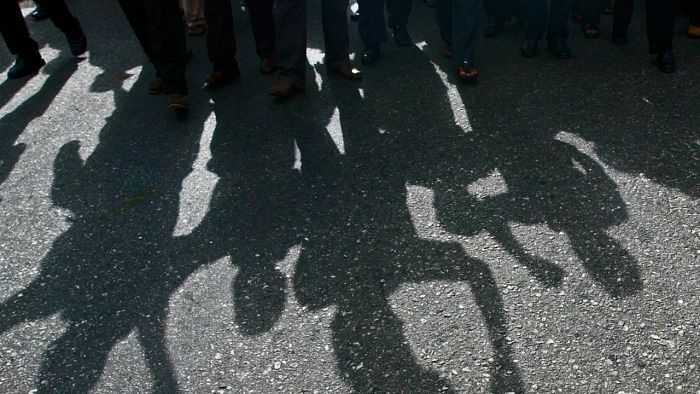
Growing up in the East of India, the first prejudice that I encountered was a derogatory reference to Communists. Children in the neighbourhood would point to a house behind ours and say, “A Communist lives in that house.” I had no idea what that meant, but when passing, I did happen to see the person, and except for a slightly untended beard, he looked perfectly innocuous, as did his family members.
Later, when the Communist Party was ruling in West Bengal, they came to the gate of our house and shook it, saying, “We have come asking for votes.” My mother replied from inside, “We don’t vote for the Communist Party.” By then I was old enough to realise that it could be a dangerous thing to wear your politics on your sleeve, but Amma was unfazed when I asked her to beware. If she only knew how much more dangerous it is now!
Later, when coming of age politically, I realised that the animosity towards the Communist Party stemmed from the fact that the Indian leaders of the party were taking their orders from another country, which clearly was a dangerous thing. And yet, thanks to Jawaharlal Nehru’s policy of non-alignment and later Indira Gandhi’s too, Russia was a friend to India, most of all during the liberation of Bangladesh. The less said about the “Hindi-Chini Bhai Bhai” the better, both then and now.
I also became aware of another category that was viewed with suspicion -- the Naxalite. Slogans like “Amaar badi, tomaar badi, Naxalbari Naxalbari,” “Jug jug jio Chairman Mao, Lal salaam Lin Pio. Charu Mazumdar zindabaad,” were heard without understanding the implications.
Later came hush-hush tales of young men who went out to study in other towns being dragged into the Naxal movement. Such lads from educated homes were hidden away in safe houses, under the watchful protection of local police officials.
Without being aware, perhaps, that was my first exposure to Urban Naxals. Later research revealed that Naxalbari was a place in the Darjeeling district of West Bengal where a peasant uprising started in 1967 under the leadership of young Communists, who went under the banner of the CPI (M) and were lauded by China. Prominent among these were Charu Mazumdar and Kanu Sanyal, who broke away in 1969 and formed their own version of the Communist Party, calling it Marxist-Leninist. The oddest thing about this split is that it was linked with the split between China and Russia, which probably explains the prejudice that Indians of a certain generation had about the Communists, which perhaps prevails. It still does not explain why the Communists were able to govern West Bengal for three and a half decades and still dominate in Kerala.
Clearly, the Naxal movement has its roots in rural India and has been able to spread across different parts of the country, especially where people have felt displaced by government policies and the handing over of mineral-rich land to corporations, who are only too happy to mine these areas for the wealth beneath.
Urban India seems less concerned with the Naxalite movement, except when passions are whipped up about how these groups are a threat to the country. Except for city boys who joined the Naxal movement in the mid-1960’s, it is hard to comprehend the clubbing of the terms “Urban” and “Naxal.”
I wonder how many urbans from India have the time to look up from their cell phones to even contemplate what this Naxal movement might really be about. Dunzo, Swiggy and the other Apps, which can fetch them goodies at the tap of a button, would really be more up their street.
But still, this Union Government does see the Urban Naxal as a threat, which is why it wanted the discharge of G N Saibaba, former professor of English at Delhi University, from a case withdrawn. He was incarcerated when he was secretary of the Revolutionary Democratic Fund and perhaps punished for speaking out about human rights abuses against indigenous Adivasis in
the mineral-rich belt of Central India and helping to mobilise them against military offensives.
An enemy of the government is an “enemy of the people,” as Henrik Ibsen points out in his play, exposing
the hypocrisy of society’s moral code.
Hence, G N Saibaba, who is 90% disabled and wheelchair-bound, has to be made an example of what an Urban Naxal is and how he should be dealt with. Who else but Shakespeare can say it best as in Julius Caesar: “O, what a fall was there, my countrymen. Then I, and you, and all of us fell down, whilst bloody treason flourish’d over us.”
(The author is an
independent writer)